どうも、コンカズ (@konkazuk) です 。
今回の記事では、基本的な疑問文のつくり方を見ていきます。

質問がうまくできるようになれば、相手とのやり取りの幅が広がるため、さらにたくさんの英語を学べることになります。
内容的には「初心者レヴェル」からとなりますが、普通に「文法は一通り知っているけどスピーキングが苦手」という人のためにも、できるかぎり独り言で使えそうな例文が並べてあるので、いい練習になるかと思います。
これらを声に出して、くりかえし読むことで、疑問文の「型」が身につくと思いますので、ぜひとも使い倒してみてください。
Yes/No で答えられる疑問文

まずは、相手が「はい」か「いいえ」で答えられる最も基本的な疑問文のカタチを見ていきます。
Be動詞/modal verbの疑問文
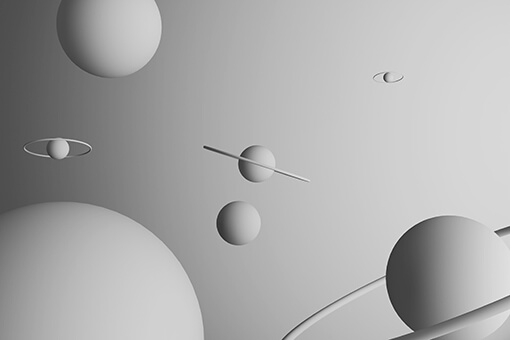
Be動詞「〜である」、そして can や will などの “modal verb” (法助動詞) が使われる場合を、まずここで見ていきましょう。
簡単なところから始めると、まずは基本的な代名詞から始まる肯定文を思い浮かべてみて…
This is my husband.
「これが私のダンナです。」
This is how much I have in my bank account at the moment.
「これが現在、私の銀行口座に入っているお金です。」
これらの文を疑問形にするには、主語とbe動詞をひっくり返して…
👉 Is this my husband?
「これが私のダンナなのか?」
👉 Is this how much I have in my bank account?
「これが今、私の口座にあるお金?(こんだけしか残ってないの?w)」
となります。
文章で書く際には、最後にクエスチョンマークをつけます。
でもって答えは “Yes, it is.” または “No, it isn’t.” で答えられますよね。
こんな感じで、以下の肯定文を読んだら、それらを疑問文にして声に出していってみてください。
It is wrong.
「それは間違っている。」
It’s too late.
「そりゃ手遅れだ。」
👉 Is it wrong?
「それは間違ってんの?」
👉 Is it too late?
「それはもう手遅れ?」
That’s my cat.
「あれは、うちの猫です。」
That’s my mobile phone.
「それは私のケータイです。」
👉 Is that my cat?
「あれは、うちの猫か?」
👉 Is that my mobile phone?
「それ私のケータイ?」
I am stupid.
「俺はバカだ。」
I am a bit tired today.
「私は今日ちょっと疲れている。」
👉 Am I stupid?
「俺はバカなのか?」
👉 Am I a bit tired today?
「私は今日ちょっと疲れているのか?」
これらは主語が “I” なので “Yes, I am.” または “No, I’m not.” のどちらかで答えられます。
He is an alien.
「彼は宇宙人だ。」
He is not a nice person.
「彼はいいヤツではない。」
👉 Is he an alien?
「彼は宇宙人なのか?」
👉 Is he not a nice person?
「彼はいいヤツじゃないのか?」
“Yes, he is.” または “No, he isn’t. (No, he’s not.)” で答えられます。
They are mine.
「それらは私のものです。」
They are different.
「それらは異なる。」
👉 Are they mine?
「それらは私のものなの?」
👉 Are they different?
「それらは別モンなん?」
答えは “Yes, they are.”
または “No, they aren’t. (No, they’re not.)”

ちゃんと声を出してしゃべってますか?
She is the boss.
「彼女はボスだ。」
She is good-looking.
「彼女はグッドルッキングだ。」
👉 Is she the boss?
「彼女がボスなん?」
👉 Is she good-looking?
「彼女はグッドルッキングなのかい?」
“Yes, she is.” または “No, she isn’t. (No, she’s not.)” で答えられます。
では、最後に ”You” からはじめる場合…
You are hungry.
「あなたは、お腹が減っています。」
You are Kate’s sister.
「あなたはケイトの姉妹です。」
👉 Are you hungry?
「あなた、お腹減ってる?」
👉 Are you Kate’s sister?
「あなたはケイトの姉妹?」
自分がこう聞かれたと想定して… 答えは “Yes, I am.” または “No, I’m not.” となりますね。

“You” で始めると相手に面と向かって話していることになるので、自問自答のカタチにはできませんが、想像力のある方は、鏡の中の自分を相手にしてみてもいいでしょう。 (頭がおかしくならない程度に) w
文法的にはたいしたことないですが、こうやっていろんなボキャブラリーや、シチュエーションを当てはめながら、それらを声に出していくことで、次第に実際の場で反射的に使えるようになってきます。

それでは、今度はこれらを過去形でトライしてみましょう。
(過去形にするとシチュエーション上意味がおかしくなってくるものは、省いてあります。)
なお、be動詞は次のように変化します。
am 👉 was
are 👉 were
今回は答えはあえて載せてありませんので、自力で頑張ってください!
It was wrong.
It’s too late.
👉 ???
That’s my cat.
That’s my mobile phone.
👉 ???
I was stupid.
I was a bit tired earlier today.
👉 ???
He was an alien.
He was not a nice person.
👉 ???
They were mine.
They were different.
👉 ???
She was the boss.
She was good-looking.
👉 ???
You were hungry.
👉 ???
どうでしたか?

文章が”Was” や “Were” ではじまるので、最初の “w” の音は、思いっきり口をすぼめてやると、英語の発音らしく聞こえますよ。✨
じゃあ、こんどはcan や will などの “modal verb” もミックスしていってみましょうか?
まずは肯定文を見て、自分で疑問文の形にして声に出していってください。
すぐに答えを見てはいけませんよ。
This can be devastating.
「これは痛烈かもしれない。」
This will be interesting.
「これは面白くなりそうだ。」
👉 Can this be devastating?
「これは痛烈かな?」
👉 Will this be interesting?
「これは面白い事になりそう?」
It might be right.
「それは正しいかもしれない。」
It can be true.
「それはホンマかもしれへん。」
👉 Might it be right?
「それは正しいかも?」
👉 Can it be true?
「そんなことあり得る?」
That will help us a lot.
「それは私たちにとって、かなりの助けになる。」
That can cause a serious problem.
「それは深刻な問題を生じる可能性がある。」
👉 Will that help us a lot?
「それは私たちにとって、かなりの助けになるの?」
👉 Can that cause a serious problem?
「それは深刻な問題を生じる可能性がある?」
I can bear with her.
「私は彼女に耐えられます。」
I will feel sick if I read this book on the bus.
「この本をバスの中で読んだら、気分が悪くなるであろう。」
👉 Can I bear with her?
「私は彼女に耐えられるのか?」
👉 Will I feel sick if I read this book on the bus?
「この本をバスの中で読んだら、自分は気分が悪くなるのでは?」
He can play the guitar.
「彼はギターを弾くことができる。」
He will attend the meeting.
「彼はミーティングに参加するでしょう。」
👉 Can he play the guitar?
「彼はギターを弾くことができるのか?」
👉 Will he attend the meeting?
「彼はミーティングに参加するでしょうか?」
They can finish this task by the end of the day.
「彼らは今日中にこのタスクを終わらせることができる。」
They are going to succeed.
「彼らは成功するであろう。」
👉 Can they finish this task by the end of the day?
「彼らは今日中にこのタスクを終わらせることができるのか?」
👉 Are they going to succeed?
「彼らは成功するであろうか?」
She will agree with me.
「彼女は私に同意してくれるであろう。」
She will be able to come tomorrow’s party.
「彼女は明日のパーティーに来ることができるでしょう。」
👉 Will she agree with me?
「彼女は私に同意してくれるであろうか?」
👉 Will she be able to come tomorrow’s party?
「彼女は明日のパーティーに来ることができるでしょうか?」
You will remember my phone number.
「あなたは、私の電話番号を覚えているでしょう。」
You might scream if you fail the exam.
「あなたはその試験に落ちたら、発狂するかもしれない。」
👉 Will you remember my phone number?
「あなたは、私の電話番号を覚えているでしょうか?」
👉 Might you scream if you fail the exam?
「あなたはその試験に落ちたら、発狂するかもしれない?」
うまく疑問文にできたでしょうか?
作業自体は、主語と助動詞(など)を反対にするだけなので、カンタンかもしれませんが、文章全体を話すとなると、口が上手く回らないって人も結構いるのではないでしょうか?
スピーキングができるようになるためには、文章を声に出して話すことがいかに重要かってことが、これだけでもわかると思います。
一般動詞の疑問文
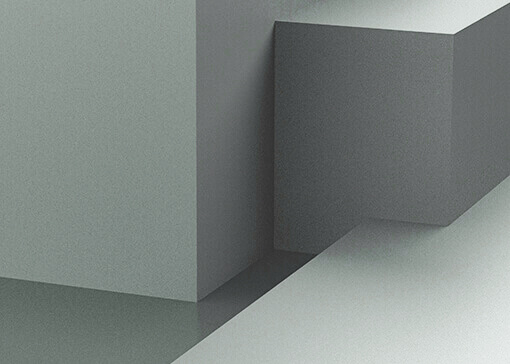
では今度は、一般動詞だけで作られている肯定文(Be動詞も、can や will などの “modal verb”(法助動詞)もない場合)を見ていきます。
まずは次の文章を見てみましょう。
Keith plays the guitar.
「キースはギターを弾く。」
Her older sister reads Japanese books.
「彼女の姉は日本の本を読む。」
これらを疑問文にすると…
👉 Does Keith play the guitar?
「キースはギターを弾くの?」
👉 Does her older sister read Japanese books?
「彼女の姉は日本の本を読むの?」
とこうなります。
助動詞である “Does” を文頭に置いて、動詞を原型に戻し、文の最後にクエスチョンマークをつけます。
じゃあ次の場合はどうなるか?
Keith and Ron play the guitar.
「キースとロンはギターを弾く。」
Her older sisters read Japanese books.
「彼女の姉たちは日本の本を読む。」
👉 Do Keith and Ron play the guitar?
「キースとロンはギターを弾くのかい?」
👉 Do her older sisters read Japanese books?
「彼女の姉たちは日本の本を読むのかい?」
今度は “Do” を文頭に置いて、文の最後にクエスチョンマークをつけます。
このように…
主語が三人称単数のとき 👉 Does
主語が三人称単数以外のとき 👉 Do
となります。
というわけで、もう少しやってみましょうか。
カンタンなボキャブラリーを使っていくので日本語訳を省いていきます。
Takeshi lives in Paris.
She eats a lot.
👉 Does Takeshi live in Paris?
👉 Does she eat a lot?
It dries quickly.
She goes to bed early.
👉 Does it dry quickly?
👉 Does she go to bed early?
Jack and Jess live together.
Those people play basketball.
👉 Do Jack and Jess live together?
(内容的にはもちろんDo they live together? でもいけます。)
👉 Do those people play basketball?
(これもシチュエーションによってはDo they play basketball? でもオッケーです。)
It gives me a sense of freedom.
They kill animals.
👉 Does it give me a sense of freedom?
👉 Do they kill animals?

it も they も三人称ですよ。
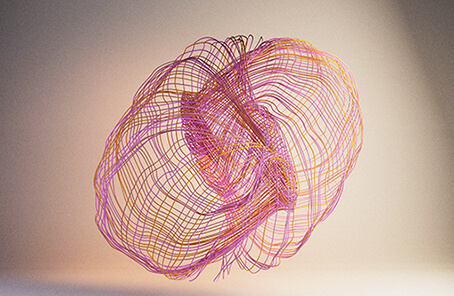
続いて、これらの過去形を見ていきます。
過去形は楽チンです。Do, Does のように使い分けることなく、両方 “Did” でいけます。
Keith played the guitar.
Her older sister read Japanese books.
👉 Did Keith play the guitar?
👉 Did her older sister read Japanese books?
read の発音は、過去形が [red] 原型は [riːd] ってところに注意です。
Keith and Ron played the guitar.
Her older sisters read Japanese books.
👉 Did Keith and Ron play the guitar?
👉 Did her older sisters read Japanese books?
Takeshi lived in Paris.
She ate a lot.
👉 Did he live in Paris?
👉 Did she eat a lot?
It dried quickly.
She went to bed early.
👉 Did it dry quickly?
👉 Did she go to bed early?
Jack and Jess lived together.
Those people played basketball.
👉 Did Jack and Jess live together?
(内容的にはもちろんDid they live together? でもいけます。)
👉 Did those people play basketball?
(これもシチュエーションによっては、Did they play basketball? でもオッケーです。)
It gave me a sense of freedom.
They killed animals.
👉 Did it give me a sense of freedom?
👉 Did they kill animals?
とまぁ、こんな感じになります。
それでは次に1人称 “I” の場合。
I love myself.
「私は自分のことが好きだ。」
I hate myself.
「私は自分のことが嫌いだ。」
👉 Do I love myself?
「私は自分のことが好きなのか?」
👉 Do I hate myself?
「私は自分のことが嫌いなのか?」
という感じで、助動詞である “Do” を文頭に置いて、文の最後にクエスチョンマークをつけるだけです。
“We” も一人称となりますが、複数形なので同じように “Do” が使われます。

ちなみに、独り言で自問自答する場合は正直なところ、あまり現在形は用いないですかね。
どちらかといえば…
Did I switch off the light?
「じぶん電気消したっけ?」
Have I overslept again?
「またオレ寝坊したか?」
のように過去形や現在完了形、または…
Can I cancel the appointment?
「予約キャンセルできるかな?」
Should I call her?
「彼女に電話すべきなのか?」
のような感じで、modal の動詞を使う場合の方が一般的かと思うので、今回はカタチだけとりあえず覚えておきましょう。(現在形をまったく使わないわけではありませんし…)
2人称の “You” の場合は、“I” の場合と同じで、現在形には “Do”、そして 過去形には “Did” を文頭に持ってきますが、独り言でつぶやく練習にはあまり向いていないため、ここでの例文は割愛させていただきます。
完了形の疑問文
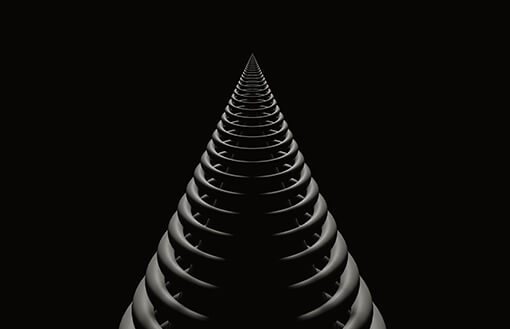
「現在完了形」は過去のある時点に起こったことが、そのまま現在まで続いている時に使われます。
肯定文だと、主語 + have (has) + 動詞の過去分詞 の形で表現されます。
例えば…
I have been here before.
「ここには以前来たことがある。」
He has finished his task.
「彼は仕事を終えてしまった。」
これらを疑問文にすると…
👉 Have I been here before?
「ここには以前来たことがあるのか?」
👉 Has he finished his task?
「彼は仕事を終えてしまったのか?」
これらもこんな感じで…
Yes, I have. / No, I haven’t.
Yes, he has. / No, he hasn’t.
のように Yes/No で答えることができます。
…とまぁ、こんな感じで Have/Has を文頭に置いて、文の最後にクエスチョンマークをつけます。
主語が三人称単数の場合は “has” を、それ以外の場合は “have” を使います。
それでは、次の例文を疑問文にして声に出していってください。
She has lived there since she was born.
「彼女は、生まれて以来そこに住んでいる。」
They have lost the match.
「彼らは、その試合で負けちゃった。」
👉 Has she lived there since she was born?
「彼女は、生まれて以来そこに住んでいるの?」
👉 Have they lost the match?
「彼らは、その試合で負けちゃったの?」
The man has been loitering by the entrance since morning.
「その男は朝から、入り口のあたりをウロウロしている。」
All the light bulbs have been replaced with new ones.
「すべての電球は、新しいものに交換されている。」
👉 Has the man been loitering by the entrance since morning?
「その男は朝から、入り口のあたりをウロウロしているのか?」
👉 Have all the light bulbs been replaced with new ones?
「すべての電球は、新しいものに交換されているのか?」
She has eaten nothing at all since last night.
「彼女は、昨夜から何も食べていない。」
The mobile phone has been completely charged.
「そのケータイは、完全に充電されている。」
👉 Has she eaten nothing at all since last night?
「彼女は、昨夜から何も食べていないの?」
👉 Has the mobile phone been completely charged?
「そのケータイは、完全に充電されているの?」
いかがでしたか?
疑問文のカタチに慣れてきたら、自分でもオリジナルの文をつくってみて、声に出してつぶやいてみましょう。
疑問詞 “Wh” を使った疑問文
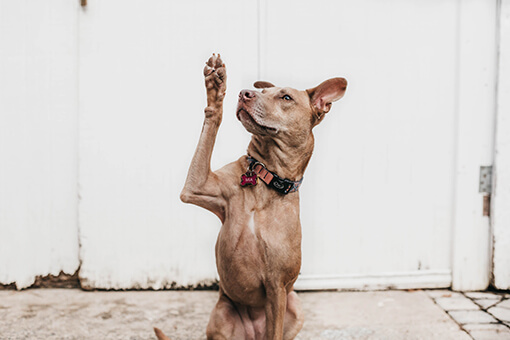
疑問詞と言えば…
- What? (何?)
- Which? (どれ?)
- When? (いつ?)
- Where? (どこ?)
- Who? (誰?)
- Why? (なぜ?)
- How? (どのように?)
のことですよね。
これらから始まる疑問文は、答えは何にでもなりえるのでYes/No では答えられません。
疑問詞を使った疑問文のカタチは、疑問詞をアタマに持ってきて、その後に be動詞、または文章に一般動詞が含まれる場合はdo、does、did 、have、has などが続きます。
というわけで、まずはこちらの文を見てください。
Masaki is playing badminton with his girlfriend in the garden.
「マサキは、庭で彼女とバトミントンをしている。」
この文をもとに、疑問文を作っていきます。
What?
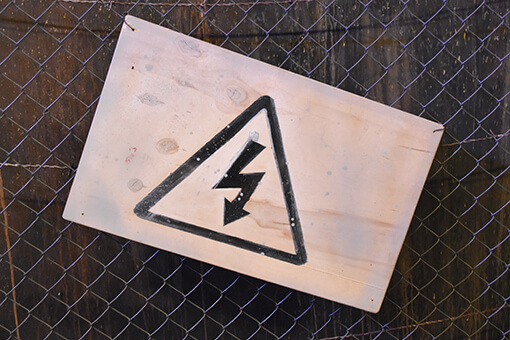
マサキが「何」をやっているのかを知りたい場合は、「何」にあたる「バトミントン」が “what” になりますよね。
この場合は疑問詞である “what” をアタマに持ってきて、次にbe動詞をつなげ、最後にクエスチョンマークをつけて完成です。
Masaki is playing badminton with his girlfriend in the garden.
👉 Masaki is playing what with his girlfriend in the garden.
👉 What is Masaki playing with his girlfriend in the garden?
Who?

「誰」がバトミントンをしているのか知りたい。この場合は、「マサキとその彼女」がそれにあたるので、”who” になります。そして2人いるので “is” は複数形の “are” に置き換えます。
Masaki is playing badminton with his girlfriend in the garden.
👉 Who are playing badminton in the garden?
今度は、マサキが誰とバトミントンをしているのか知りたいとき。
この場合は「マサキの彼女」がそれにあたるので、”who” となります。
Masaki is playing badminton with his girlfriend in the garden.
👉 Masaki is playing badminton with who in the garden.
👉 Who is Masaki playing badminton with in the garden?
“with” がそのまま残されているのに注目ですね。
Where?

どこでバトミントンをしているのか知りたい。この場合は、「庭」がそれにあたるので ”where” になります。
Masaki is playing badminton with his girlfriend in the garden.
👉 Masaki is playing badminton with his girlfriend where.
👉 Where is Masaki playing badminton with his girlfriend?
この文で質問できる情報はこれぐらいですかね。
How?
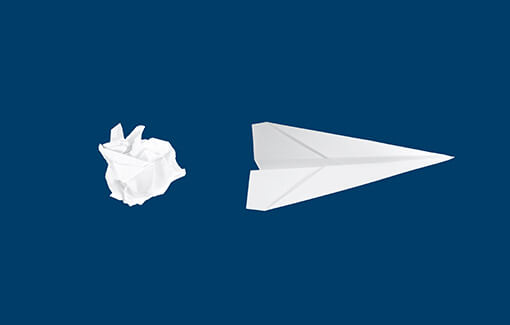
今度は、同じようなプロセスで “how” を見ていきます。
He goes to work by bus.
「彼はバスで仕事に行く。」
「どうやって」彼が通勤しているか知りたい。
すると今回の場合「バスで」が “how” にあたりますよね。
というわけで…
He goes to work by bus.
👉 He goes to work how.
ここではbe動詞ではなく、一般動詞がつかわれているので、”does” を持ってきて、動詞を原形にもどします。
👉 He does go to work how.
でもって、最後に順番をいれかえて…
👉 How does he go to work?
…となります。
Which?

最後にもう一つ、いっときましょうか。
Yours are the red ones out of these.
「これらのうちの赤色のやつが、あなたのモノです。」
「どれ」が、あなたのモノなのかを知りたい。
すると、この場合「その赤色のやつ」が 「どれ=which」➡︎「どのやつ = which ones」にあたりますよね。
ということで…
Yours are the red ones out of these.
👉 Yours are which ones out of these.
👉 Which ones are yours out of these?
となります。
このような感じで「どこ、何、誰など」にあたる部分を疑問詞に置きかえて、それを文頭に持ってきて疑問文をつくっていきます。
とりあえず、例文をここに何個かならべておくので、これらを声に出して読んで、型を身につけましょう。
What was his name?
What was I watching last night?
What am I thinking about?
What have I done?
What did my daughter see in the sky last night?
What was I supposed to do in such a situation?
Which colour is your favourite?
Which one was more important?
Which way did I want to go?
Which was good for Alex?
Which one did you choose in the end?
When did I see him?
When was the last time I played the piano?
When does he come to my house?
When did we meet up?
When was your birthday?
Where is he from?
Where does he come from?
Where do you live?
Where did I drop my wallet last night?
Where were you?
Who am I supposed to meet there?
Who did you go to the concert with?
Who do you think you are?
Who was Jack playing basketball with?
Who were they?
Why did you go there?
Why did I tell her the truth?
Why has he been waiting for her for such a long time?
Why have they got your number?
Why did I forget to lock my bike?
How did you do it?
How is it possible?
How did you know it was him?
How did it happen?
How am I supposed to know it?
間接疑問文

まず、間接疑問文っていうのは、自分がよく知らない相手に何かを質問する際などに、直接の疑問文、例えば…
Where can I find a cash machine around here?”
「この辺りでキャッシュマシーンはどこにあるんだい?」
みたいな感じで話しかけると、相手によっては面食らったり、ムッとしてしまう可能性があるので、文頭に “Do you know 〜” などを足すことによって、相手が気持ちよく答えてくれるようにもっていくのに使います。
👉 Do you know where I can find a cash machine around here?
「この辺りで、あなたはキャッシュマシーンがあるところを知っていますか?」
この場合、”Do you know 〜” がすでに、疑問文の構造を持っているので、その後の文は「主語 + 動詞」のカタチにもどします。
次の例文を見てみましょう。
Where did you buy your ticket from?
「あなたのチケットはどこで買ったの?」
これを間接的な表現にすると…
👉 Could you please tell me where you bought your ticket from?
「あなたがどこでチケットを買ったのか、教えていただけませんか?」
ここでも同じように ”Could you tell me 〜” がすでに、疑問文の構造を持っているので、その後の文は、疑問文のカタチを作るために生じた “did” を引っこめて、原形にした動詞 “buy” をもとの過去形 “bought” にもどします。
つまり元々の疑問文のカタチを、
疑問詞 + 主語 + 動詞
の語順にすることになります。
というわけで今回の記事は、以上となります。
結構なボリュームでしたが、最後までお付き合いいただきありがとうございました。
どうもお疲れ様です。
それではまた。
コンカズ
*この記事の英語ヴァージョンは 👉 こちらから

